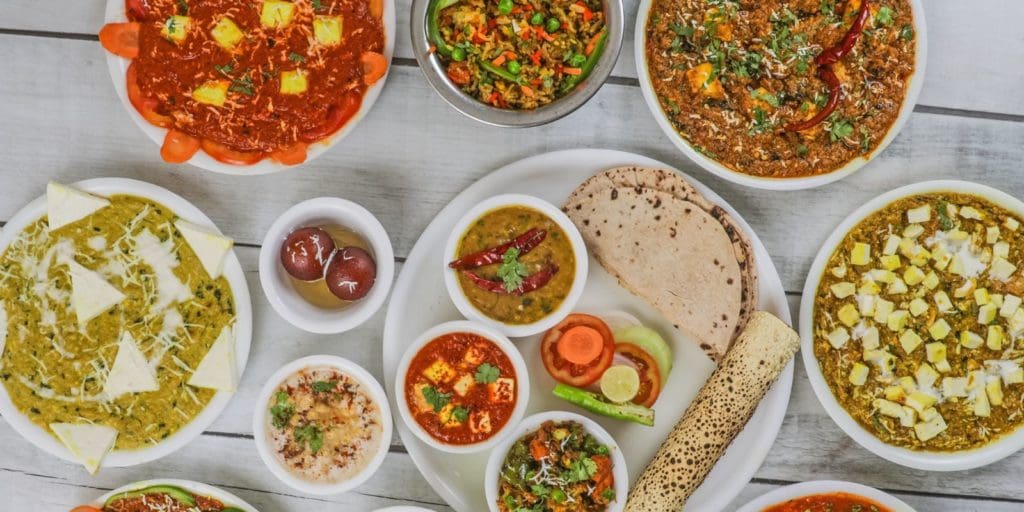If you’re looking to add more plant-based protein to your diet, there are plenty of options in Indian cuisine. While meat is a big part of traditional Indian diets, vegetarian dishes also have their place at the table. For example, dal (a hearty lentil dish) is often eaten for breakfast or dinner and contains several grams of protein per serving. Similarly, chana bhatura (fried bread with spiced chickpeas) has about 10 grams of protein per serving.
This article discusses some common ingredients in Indian cooking and how they contribute to getting enough protein into your daily diet!
The protein content of vegetarian dishes varies based on the type of grain or the legume in it.
- Some vegetarian dishes are high in protein, and others are low. To determine the amount of protein in a dish, you must look at its ingredients. For example, if a dish is made with beans or lentils (you may know them as legumes), it will have more protein than rice or potatoes. This is because these foods contain more essential amino acids than grains like rice.
Some Indian dishes use yogurt and milk products, which are good protein sources.
Some Indian dishes use yogurt and milk products, as they are protein-rich sources. Yogurt is made from cow’s milk and contains 8 grams of protein in a cup. Milk is also high in protein, with an 8-ounce glass containing 9 grams. Paneer (cottage cheese) provides almost 20 grams per 100-gram serving.
Paneer is a fresh cheese, high in nutrients.
Paneer is a fresh cheese, high in nutrients, made by curdling heated milk with lemon juice or vinegar and pressing the resulting coagulated mass to cut it into cubes. Paneer can be used in place of meat as it has a similar texture and flavour and is high in protein, calcium, iron, vitamin B12 and vitamin A.
Black chana is a good source of plant-based protein.
Black chana is a good source of plant-based protein. It provides 1 g of protein for every 100 calories, and the fiber in black chickpeas helps you feel full and stay satisfied longer than many other foods. Black chickpeas are also rich in iron, calcium, vitamin C, and many other nutrients essential for keeping your body healthy. Black chickpeas are low in fat and sodium; they have no cholesterol or trans fats and no saturated fats.
Soybeans and mung beans are both excellent sources of protein.
While soybeans may be the most well-known legume, mung beans are also an excellent source of protein and contain nearly 50% as much protein as soybeans.
Mung beans provide all essential amino acids and are a good source of iron, copper, magnesium, and zinc. This makes them especially beneficial for vegetarians who may be at risk for nutrient deficiencies.
A lot of Indian food contains plenty of vegetarian protein sources.
Many Indian foods contains plenty of vegetarian protein sources, and the amount of protein can vary depending on what kind of grain or legume the dish is made from.
Regarding proteins in Indian dishes, yogurt and milk products are often used for their high-quality amino acids and other nutrients. However, if you prefer to order takeaway online, you can check out some cool restaurants on platforms like Chef Online.
This post has given you a brief overview of the best vegetarian Indian dishes rich in protein. These foods may not be as popular as meat dishes among Indians, but they can provide you with all the necessary nutrients to stay healthy.

